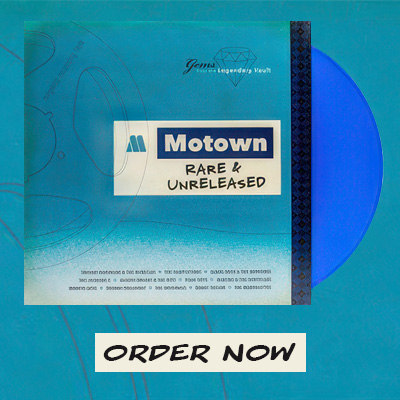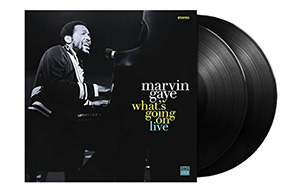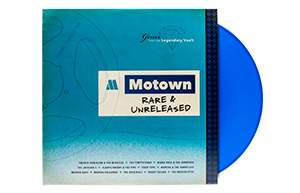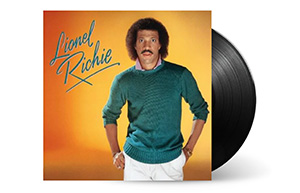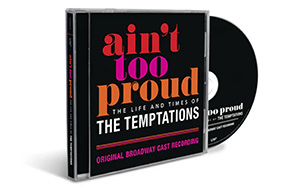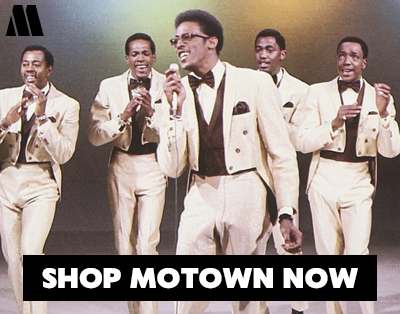The Contours
Despite an ever-changing lineup (with at least 25 different members over time) and a reputation as hell-raisers (Berry Gordy Jr called them “hoodlums” and warned his other artists to “stay away from those cats”), the Contours were Hitsville’s most exciting stage act, combining gymnastic gyrations with Billy Gordon’s rough-hewn vocals to help establish Motown before the more polished Motown Sound had developed.
FAST FACTS:
- First Hit: “Do You Love Me”
- Biggest Hit: “Do You Love Me”
- Biggest Album: Do You Love Me (Now That I Can Dance)
- Career Highlight: Recording “Do You Love Me” in 1962 propels the Contours to the national spotlight, and the song’s blend of R&B, rock ‘n’ roll and pop make it so popular that is frequently covered by other acts, especially those overseas: it becomes the first Dave Clark Five chart hit in the UK and this version hits Number 11 in the U.S., while Brian Poole and the Tremeloes have a Number One hit with it in Britain, the first Motown composition to top the UK charts. Long after becoming a standard, the Contours version is a hit once again in 1988 when featured in the hit film Dirty Dancing, sparking a renaissance for the Contours long after the song’s original release.
In the fall of 1960, a recently-formed Detroit quintet calling themselves the Blenders – Billy Hoggs, Billy Gordon, Joe Billingslea, Hubert Johnson and Leroy Fair – auditions for Wes Higgins, who owns a local recording studio. They sing three songs, he likes one of them — but not the group, and they decline to give him the song. As they depart, they notice a sign for Higgins’ Contour Records and they get the idea to change their name to the Contours – with the accent on the second syllable. They then travel to West Grand Boulevard to audition for Berry Gordy at his new Hitsville recording studio. Upon hearing them perform those three tunes, Gordy, his wife Raynoma and his secretary (and writing partner) Janie Bradford advise them to polish their act and return in six months. Ray and Janie especially are intrigued by the group. After exiting, Johnson suggests the five visit his cousin Jackie Wilson, for whom Gordy has written hit records. They audition for Wilson, who then phones Gordy — and the Contours are summoned back to Hitsville, where they audition once again, singing the same three songs, this time getting Berry’s approval. They sign a seven-year deal to record for him.
In February 1961, the Contours release their first single on Motown, “Whole Lotta Woman”/ “Come On And Be Mine,” two of the three songs in their original audition. Produced by Berry, it goes nowhere.
Rehearsing their stage routine, it becomes clear that Fair cannot dance. He’s voted out of the group, very briefly replaced by Martha Reeves’ brother Bennie and then, after Bennie was called for military service, by Sylvester Potts. The Contours with Potts then re-record “Whole Lotta Woman” with fuller instrumentation and a slightly wilder spirit. The song is re-released in May. It still goes nowhere.
Mickey Stevenson produces the Contours next release in August, an up-tempo shuffle “The Stretch,” intended to be a dance hit. With the doo-wop “Funny” as the B-side, this also has little impact, although it is the first Motown single to feature the now-famous map label.
Guitarist Huey Davis joins the Contours as their musical director.
Motown legend has it that the Contours enter Hitsville following a record hop in June 1962 to find Berry Gordy at the studio piano. He asks the group if they know where the Temptations are, that he has a song for them. Unable to find the Temps, Gordy asks the Contours to give it a shot, telling Billy Gordon, “I want you to put some of your preaching voice in the song.” He plays them the demo of him singing his new composition and, with its spoken intro and false fade at the end, “Do You Love Me” becomes their third single. A perfect vehicle for their talents, it is released on the Gordy label before the month ends, exploding to Number 3 on the Pop chart and Number 1 R&B.
“Do You Love Me” becomes the Contours’ first UK single in September ’62, licensed to Oriole Records, but it does not chart. Their singles will regularly be issued in Great Britain but none will be hits overseas for many years.
With a domestic hit song to compliment their high-energy stage act, the Contours become part of the first Motortown Revue in late ‘62. While on the road, Motown releases a Contours LP, Do You Love Me (Now That I Can Dance) in October ’62. It’s the first album on the Gordy label and contains their next single release in November, “Shake Sherrie,” which peaks at Number 42 on the Pop chart and Number 21 R&B.
When the tour reaches its final stop in December, Motown records the show at the Apollo Theater in New York for an forthcoming live Motortown Revue album and all the acts are caught on film — none quite as dynamic as the Contours, who perform ferocious choreography while breathlessly singing “It Must Be Love” and “Do You Love Me.”
Another result of the Motortown Revue is that Gordon and the Marvelettes Georgianna Tillman marry while Hubert Johnson and the Marvellettes Gladys Horton become a couple. Some accounts attribute the romances to an unchaperoned party during the tour.
The Contours record prolifically throughout 1963, but only a pair of singles comes out that year. Their March ’63 single, “Don’t Let Her Be Your Baby,” again written and produced by Berry, has many of the same elements of “Do You Love Me” – the spoken intro that breaks into a “twist” beat, Gordon’s near-hoarse vocals with the deep harmony background singing. It peaks at Number 63 on Billboard’s Pop chart and Number 37 on the Cash Box R&B chart.
With hopes of a chart rebound for the Contours, Motown assigns Brian Holland and Lamont Dozier to produce their next release, another novelty tune written by Holland, Dozier and Freddie Gorman. But “Pa, I Need A Car” – released in June ’63 – falls flat.
A tumultuous 1964 for the Contours takes shape when Berry first hears a song in his own home co-written and produced by a Motown Quality Control Department employee, Richard Street, who is picking up extra cash baby-sitting Gordy’s children and sitting at Berry’s piano. Gordy likes the song and tells Street to record it. In the studio, it echoes their biggest hit, with Gordon speaking over a guitar intro: “1964, and we gonna dance some more…” The Funk Brothers house band then steps on the gas and “Can You Do It?” takes off, driving to Number 16 on the Cash Box R&B chart and 41 on the Pop chart. It’s the last record recorded by the best-known Contours lineup.
A dispute with the company – Motown wanted them off the road to record; they wanted the paydays of more scheduled performances — causes four of the Contours to depart Motown, leaving only Gordon behind.
Berry recruits three new backup singers – Council Gay, Jerry Green and Alvin English – but before the “new” Contours go into the studio again, Sylvester Potts returns and English departs. In October ’64, this lineup records “Can You Jerk Like Me?” hoping to ride the first wave of the latest dance craze. The Larks’ Top 10 hit “The Jerk,” released slightly earlier, gets the jump on the Contours, although this Mickey Stevenson-Ivy Hunter production does respectfully well. Released in November, it peaks at Number 47 Pop and Number 15 R&B. The B-side ballad “That Day She Needed Me” – a Smokey Robinson composition and production recorded in ’63 with the earlier lineup — also charts at Number 53 R&B, making this the only two-sided charting Contours single.
A possible second Contours album seems to be in the planning stages, with a potential release at the end of 1964/beginning of 1965. Later, some Motown historians will suggest the LP might be titled Dance With The Contours but, although there is sufficient material, it never materializes.
For the Contours’ lone single release in ’65, Smokey and fellow Miracle Bobby Rogers come up with a suitably rambunctious lyric matched with a wonderfully punchy Funk Brothers track for “First I Look At The Purse.” Rogers’ spoken falsetto introduction asks “What does every man look for?” and over the next two minutes and 57 seconds extols finance as a precondition for romance. Peaking at Number 12 on the R&B charts and 57 on the Pop charts, this song will become a contemporary standard covered by numerous bar bands and recording artists ranging from the J. Giles Band, to Rod Stewart, Commander Cody and his Lost Planet Airmen and David Bromberg.
More Contours studio recordings ensue, including a few on which Jerry Green takes the lead vocal, but they are destined to stay in the can for decades.
Billy Gordon departs the group prior to their next single, replaced by Joe Stubbs, brother of the Four Tops’ Levi Stubbs and a former lead singer with the Falcons. As the lone Contours single featuring Stubbs, and their lone release of 1966, “A Little Misunderstanding” — a Clarence Paul-Mickey Stevenson production co-composed by Stevie Wonder — features a magnificent Funk Brothers track propelled by James Jamerson’s dynamic bass, Stevie’s drumming and supporting vocals from the Andantes. This prime slice of the Motown Sound reached Number 18 R&B but, undeservedly, only Number 85 Pop.
Stubbs continues to record tracks with the Contours but, when offered a chance to join a new Motown group, The Originals, he departs in late ‘66. The remaining members find a young Dennis Edwards – who had already signed with Motown as a solo act — singing in a bar and recruit him as Joe Stubbs’ replacement. Before the year ends, the Contours record their final release, “It’s So Hard Being A Loser,” with Dennis on lead vocals. Issued in March 1967, it only rises to Number 35 on the R&B chart and Number 83 on the Pop charts.
Again, there are hints of a new album by the Contours, to be named after this most recent single. But subsequent research will not prove this with any certainty. Although other recordings intended for the Contours take place, few of them are completed as some members have a run-in with the law and Dennis asks out of the group. The unfinished tracks are reassigned to him alone and the Contours’ studio work grinds to a halt.
When the group’s contract ends toward the start of 1968, Motown does not renew it and the original Contours cease to exist.
In 1970, as the Motown Sound begins to grip the United Kingdom, Motown releases “Just A Little Misunderstanding” as a single for the UK market and it peaks at Number 31, the first Contours record to make the UK charts.
In the early ‘70s, Joe Billingslea reforms the Contours with Council Gay and three other singers and gigs around Detroit. Over the next decade, they perform throughout the U.S.
In 1981, as part of Motown’s massive reissue program of its classic vinyl albums, Do You Love Me (Now That I Can Dance) is re-released and, although it has the same cover art, it is in fact not the same LP as the 1962 original. Only the title song and “Shake Sherrie” remain from the original and the rest of the album collects the Contours’ hits that came after the LP’s original incarnation, making it in reality their first greatest hits compilation album.
In 1984, Gay leaves the group and Sylvester Potts rejoins the Contours and remains with his old partner Billingsley for over 20 years.
The hit film Dirty Dancing premieres in 1987 with “Do You Love Me” as part of its soundtrack. Motown re-releases the single in ’88 and, 26 years after it was first a hit, it reaches Number 11 on the Pop chart. The song is also re-released in England where it peaks at Number 76.
Motown re-issues the 1981 greatest hits version of Do You Love Me (Now That I Can Dance) on LP and CD, with the CD also containing a 12-inch dance remix version of “Do You Love Me.”
The Contours join a “Dirty Dancing Tour” with other ‘60s artists whose music is featured in the film. The tour travels to eight countries and is seen by two million people. A Los Angeles performance recorded live at the Greek Theater is telecast and the Contours are prominently featured singing a number of songs and dancing energetically during their 25 minutes on stage. A live album from the tour is also released on RCA Records with three Contours tracks.
The Contours sign with Ian Levine’s Motorcity Records and record one CD that is released, Flashback, in 1990 and another, Revenge, that was not released. A Best of the Contours CD was also released in 1996, compiled from seven Flashback tracks and 11 previously unreleased Motorcity recordings.
In 1999, Motown issues The Very Best Of The Contours, a CD consisting of 15 tracks compiled from their ‘60s singles, some on any album for the first time.
In 2000, Universal’s Spectrum Music in the UK releases The Essential Collection, anthologizing 18 tracks of the Contours’ Motown recordings.
In 2003, the Contours are added to the list of artists for whom Universal Music compiles a Millennium Collection Best of CD for “The 20th Century Masters” series.
In recent years, due to the efforts of Motown historian Keith Hughes, Kent Records in the UK releases two CD compilations of hits, rarities and many unreleased Contours tracks. The 2011 set Dance With The Contours, covers recordings from 1963-1964, aspiring in part to recreate the unrealized second LP. A 2014 disc, A Little Misunderstanding, tackles tracks from 1965-1968, including material that might have formed a later LP.
In 2015, the Contours are inducted into the R&B Hall of Fame.




